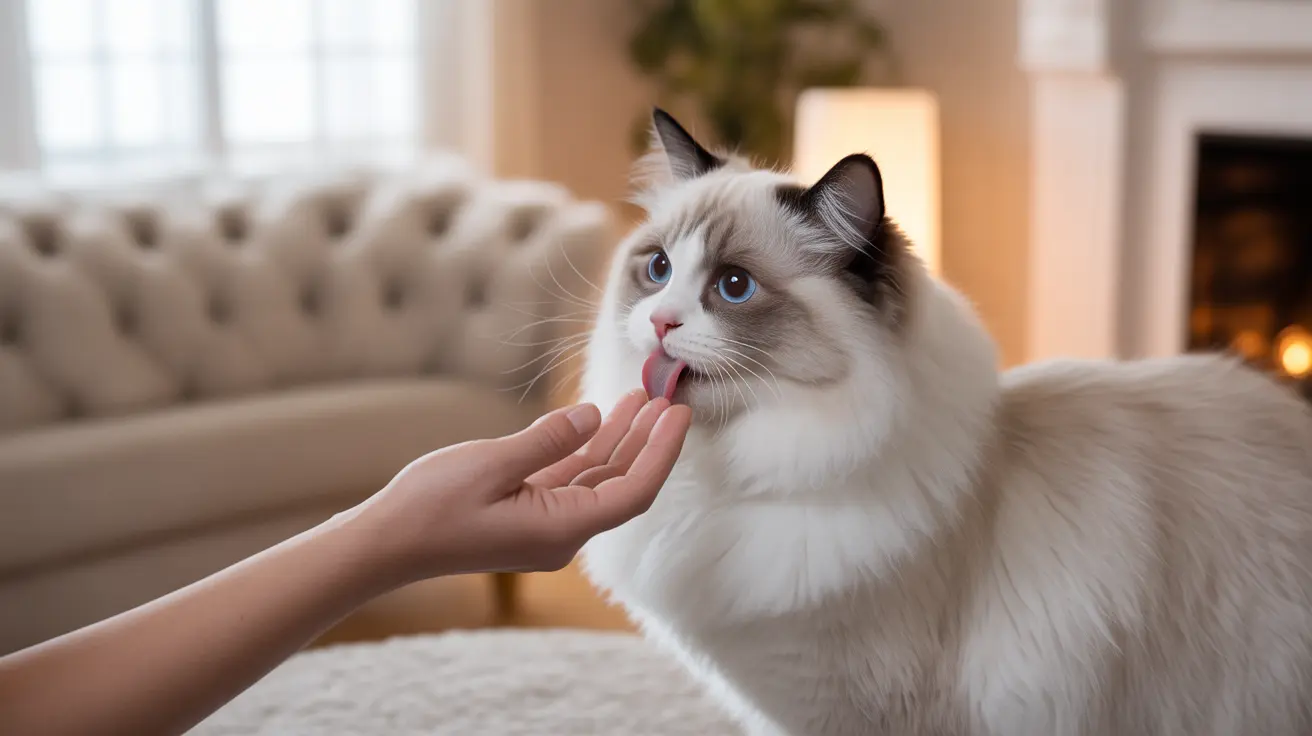Understanding Your Cat's Licking and Biting Behavior
If you've ever been puzzled by your cat's tendency to lick you affectionately one moment and then suddenly bite you the next, you're not alone. This common feline behavior, while sometimes startling, actually carries significant meaning in cat communication and social bonding.
As experienced cat behaviorists explain, this lick-then-bite sequence is a complex form of interaction that can indicate various things - from affection to overstimulation, and from playfulness to subtle warnings. Understanding why cats exhibit this behavior is crucial for maintaining a healthy relationship with your feline companion.
The Affectionate Side: Love Bites and Social Bonding
When your cat licks and then gently bites you, they're often displaying what behaviorists call "love bites." This behavior mimics the social grooming (allogrooming) that cats naturally perform with their trusted companions and family members.
Mother cats use this technique with their kittens, and adult cats continue this behavior with their preferred humans as a sign of acceptance into their social group. The gentle nibbling that follows the licking is typically non-aggressive and serves to strengthen social bonds.
When Play Turns to Bites: Understanding Playful Intent
Many cats, especially younger ones, use the lick-and-bite combination as an invitation to play. You might notice this behavior accompanied by dilated pupils, perked-up ears, and an energetic tail position - all signs that your cat is in a playful mood.
This behavior often stems from natural hunting instincts, where cats in the wild might groom their prey before pouncing. In domestic cats, this has evolved into a form of social play, particularly common during dawn and dusk when cats are naturally more active.
Overstimulation: When Petting Goes Too Far
One of the most common reasons for the lick-bite combination is overstimulation. Your cat might thoroughly enjoy being petted initially (shown by the licking), but when they reach their stimulation threshold, they may bite as a way to communicate "enough."
Watch for warning signs of overstimulation, including:
- Tail twitching or lashing
- Skin rippling along the back
- Ears flattening or rotating backward
- Sudden body tensing
- Dilated pupils
The Medical and Behavioral Perspective
Sometimes, excessive licking and biting can indicate underlying health issues or stress. Cats might exhibit this behavior due to:
- Skin allergies or irritations
- Anxiety or stress
- Environmental changes
- Chronic pain
- Compulsive disorders
If your cat's licking and biting behavior suddenly increases or becomes aggressive, it's important to consult with a veterinarian to rule out medical causes.
Frequently Asked Questions
Why does my cat lick me and then gently bite—are these "love bites"?
Yes, gentle licking followed by soft bites often indicates affection and social bonding. These "love bites" are your cat's way of showing that you're part of their family group and mimics behavior learned from their mother during kittenhood.
How can I tell if my cat is overstimulated when it licks then bites me?
Watch for signs like tail twitching, skin rippling, flattened ears, or dilated pupils. These indicators suggest your cat is reaching their stimulation threshold and might bite after licking as a way to say "stop."
Is my cat trying to play when it licks me and then bites me?
If accompanied by energetic body language, like perked ears and an upright tail, the lick-bite combination often signals playful intent. This is especially common in younger cats or during their active periods at dawn and dusk.
What does it mean if my cat licks me as part of grooming before biting?
When cats include you in their grooming routine, it's a sign of acceptance and trust. The following bite is usually gentle and part of the natural grooming process, similar to how cats groom other cats in their social group.
When should I be concerned about my cat's licking and biting behavior?
Seek veterinary attention if the behavior becomes aggressive, excessive, or is accompanied by other changes like hair loss, skin irritation, or behavioral changes. These could indicate underlying medical or psychological issues requiring professional intervention.
Conclusion
While the lick-then-bite behavior might seem confusing at first, it's usually a normal part of feline communication and social bonding. By understanding your cat's body language and respecting their boundaries, you can better interpret this behavior and maintain a positive relationship with your feline friend.






